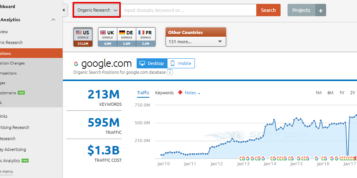When seasonal festivities like Christmas approach, retailers are firing at all cylinders in their preparation for the Christmas rush.
However, for many, their ecommerce website was locked down in August and remains largely unchangeable regardless of what is happening within the industry. Given that seasons are shortening, this seems an out-dated model where retailers are compromising profits by not optimising their sites based on the season they are currently in. Particularly in fast fashion where retailers now have 52 micro seasons a year.
Christmas is the most important trading period of the year and can be the most profitable trading period for most businesses. This is backed up by research that revealed 73% of retailers believe Christmas is the seasonal peak that has the most impact on their business.
While it’s not surprise that Christmas is top of the agenda, retailers are now beginning to see seasonal commerce increasing throughout the year as as popular events in the U.S. such as Prom and Black Friday become more widely adopted. Retailers also experience different peaks depending on what sector they are in. For example, DIY and Homeware stores often experience large numbers of shoppers during bank holidays and florists have many peaks too throughout the year – from Valentines’ Day through to the summer as wedding season hits.
With new peaks being introduced more often and as consumer behaviour changes, retailers need to make sure their website is optimised for any seasonal commerce. For example, as well as thinking about Christmas, retailers now need to also prepare for Black Friday and Cyber Monday, which have become huge retail events in the UK thanks in large to Amazon. And while Amazon continues to dominate SERPs, John Lewis and Argos also rank highly for the search term ‘black friday’.
A quick look at John Lewis’ Black Friday page, shows that it’s very well optimised; it’s 2 pages from the home page, is full of keyword-rich copy, includes relevant links and has over 100 backlinks pointing to it.
In recent years the weather has also impacted retailers. A wet August, followed by an unseasonably warm September and October caused a number of retailers to issue profit warnings as shoppers delayed buying staple winter items such as coats and boots. SEO therefore needs to be agile enough to enable retailers to be reactive, not just proactive. It is therefore worrying that recent Research revealed that 59% of retailers don’t have the time or resources to fully research season trends and changes.
Seasonal commerce demonstrates the value of flexible business planning for retailers, where they are able to take into account the seasonal peaks they are expecting, and also consider the unexpected peaks that might arise without notice. Locking down a digital strategy months ahead of a seasonal peak leaves retailers vulnerable and frustrated.
This change in consumer behaviour, combined with shorter and more frequent seasons, mean that retailers need to adjust their old SEO models and implement digital strategies that are both flexible and adaptable, to give them the ability to scale, maximise and manage peaks. If not, they risk missing out on customers and ultimately profits.






